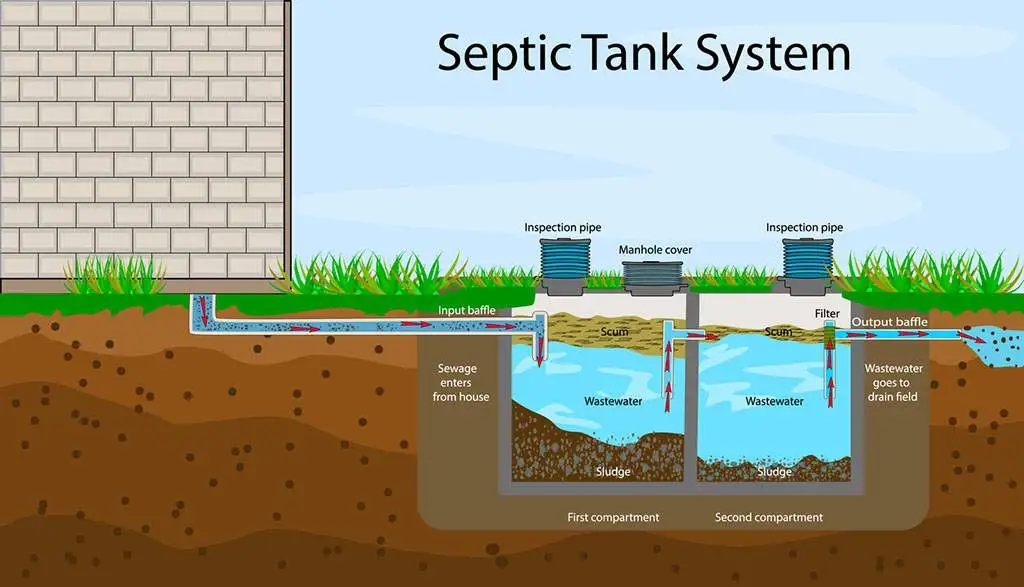Septic tanks play a crucial role in managing household wastewater efficiently, but their maintenance often proves to be a challenging task. To make this process more manageable and effective, many homeowners are turning to septic tank riser installation. In this comprehensive guide, we’ll delve into the significance of septic tank risers, the step-by-step installation process, and the long-term benefits that come with this essential upgrade.
Understanding the Significance
What is a Septic Tank Riser?
A septic tank riser is a vertical pipe that extends from the septic tank to the surface level, allowing easy access to the tank for inspection, pumping, and maintenance. Typically made of durable materials like PVC or polyethylene, these risers come with lids that provide a secure and airtight seal, preventing odors and contaminants from escaping.
Importance of Septic Tank Risers
-
Accessibility: Without a riser, accessing the septic tank involves digging up the soil covering it. A riser brings the tank’s access point to the ground level, eliminating the need for excavation and making routine maintenance tasks much simpler.
-
Time and Cost Savings: Routine septic tank maintenance, such as inspections and pumping, becomes more time-consuming and expensive without a riser. With easy access, professionals can swiftly complete these tasks, saving both time and money in the long run.
-
Preventing Damage: Digging around the septic tank every time it needs attention can cause damage to the surrounding soil and landscape. A riser prevents unnecessary disturbance, preserving the integrity of your property.
Step-by-Step Guide to Septic Tank Riser Installation
Installing a septic tank riser may seem like a daunting task, but with the right tools and guidance, it can be a straightforward process. Here’s a step-by-step guide:
Step 1: Gather Necessary Materials and Tools
Before you begin, ensure you have the following materials and tools:
-
Septic tank riser kit
-
PVC pipe (if not included in the kit)
-
PVC cement
-
Saw
-
Screwdriver
-
Trowel
-
Level
Step 2: Locate the Access Point
Identify the existing septic tank access point. This is usually a round or square concrete lid on the surface of the ground.
Step 3: Excavate the Area
Carefully dig around the access point to expose the septic tank lid. Be cautious not to damage any pipes or components during this process.
Step 4: Clean the Access Point
Remove any dirt or debris from the septic tank lid and its surroundings. This ensures a clean and secure connection when installing the riser.
Step 5: Measure and Cut the PVC Pipe
Measure the distance from the top of the septic tank to the ground level. Cut the PVC pipe to this length using a saw.
Step 6: Install the Riser
Assemble the septic tank riser according to the manufacturer’s instructions. Attach the riser to the septic tank’s access point using PVC cement for a secure seal.
Step 7: Secure the Lid
Place the riser lid on top of the assembled riser and secure it in place. Ensure that the lid is airtight to prevent odors and contaminants from escaping.
Step 8: Backfill the Excavated Area
Carefully backfill the excavated area around the riser, tamping down the soil as you go to ensure stability.
Step 9: Check for Level
Use a level to ensure that the riser and lid are perfectly level with the ground surface. This not only enhances the aesthetics but also ensures a proper seal.
Step 10: Secure the Lid
Tighten any screws or fasteners on the lid to secure it in place. This step is crucial for maintaining an airtight seal and preventing unauthorized access.
Long-Term Benefits of Septic Tank Risers
1. Simplified Maintenance
With a septic tank riser in place, routine maintenance tasks such as inspections and pumping become significantly easier. Professionals can access the tank without the need for extensive digging, reducing both time and labor costs.
2. Cost Savings
While the initial cost of purchasing and installing a septic tank riser may seem like an investment, the long-term cost savings are substantial. The ease of access means that maintenance tasks are completed more efficiently, reducing the frequency of repairs and prolonging the lifespan of the entire septic system.
3. Environmental Protection
Efficient septic system maintenance contributes to the protection of the environment. A well-maintained septic system prevents leaks and contamination, ensuring that wastewater is properly treated before returning to the groundwater.
4. Increased Property Value
A property with a well-maintained septic system is more attractive to potential buyers. The presence of a septic tank riser indicates that the homeowner has taken proactive steps to care for the property, potentially increasing its resale value.
5. Odor Prevention
Septic tank risers come with airtight lids that prevent unpleasant odors from escaping. This not only improves the overall environment of your property but also enhances the quality of life for you and your neighbors.
Conclusion
Investing in a septic tank pumping company is a wise decision that pays off in the long run. The ease of access, cost savings, and environmental benefits make it a valuable addition to any septic system. By following the step-by-step installation guide provided, homeowners can unlock the full potential of their septic systems and ensure a smooth and efficient wastewater management process for years to come.





